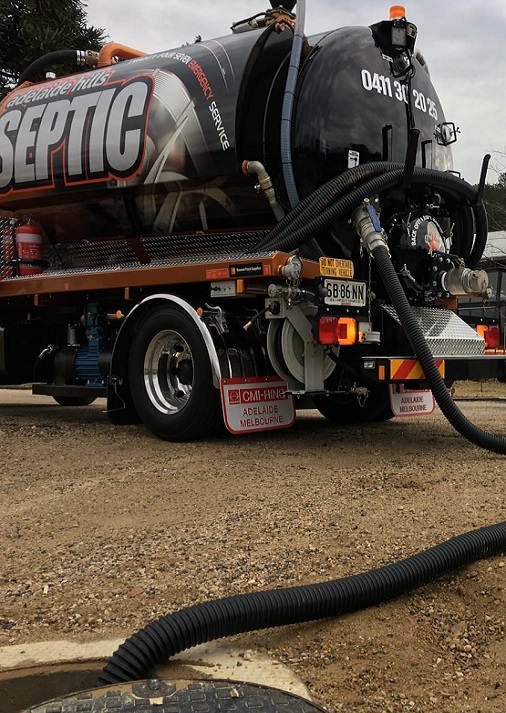 Understanding a Septic Tank System
Understanding a Septic Tank System
A septic tank is a large underground tank that’s capable of holding hundreds of gallons of waste water. The most common tanks are 3000 lt and consist of a cylindrical tank approximately 2m long with two concrete lids, with wires for lifting, covering most of the length of the tank. The septic tank is connected to the house via the plumbing main line. All waste water in the home, which drains from sinks, toilets, showers and bathtubs, feeds into the septic tank via this line.
When the waste water enters the septic tank, it separates into three layers: solids at the bottom (sludge), water in the middle, and fats and oils at the top (scum). Bacteria that lives in the tank helps to break down the sludge, turning it into a liquid.
Near the top of the septic tank is a pipe that leads to a part of the yard called the drain field. When the waste water in the septic tank reaches this pipe, the water flows into the drain field and is filtered through the soil. The soil cleans the water, preventing contamination of ground water in the area.
Caring For your Septic System - Bad Odours?
Septic tanks need to operate under alkaline conditions. Some factors which can cause odour problems include:
Excessive use or use of the wrong type of cleaning chemicals
Shock volumes of incoming water (eg. From several loads of washing in quick succession.)
Lack of use of the system while the house has been vacant.
The normal bacteria may die off under acid conditions resulting in offensive odours.
 Other General Tips for Caring For Your Septic System
Other General Tips for Caring For Your Septic System
Mosquito Control - Ensure vents have mosquito-proof mesh fitted. Ensure inspection openings and tanks are sealed.
Cleaners - Use products labelled as biodegradable or septic safe follow directions for use and use in moderation. Use alternative cleaners such as bicarbonate of soda, pure soap, vinegar, lemon juice, cloudy amonia, etc.
Toilet Paper - Use only biodegradeable toilet paper. Facial tissues, sanitary napkins, tampons and disposable nappies or nappy liners should not be flushed down the toilet.
Food Scraps - Should go into the compost or bin, not down the sink and into your tank.
Water Use - Minimise water use, (eg. By suds-saving or spreading wash loads over the week.)
Desludging - All types of septic tanks require desludging by professional contractors at least every four years. Some tanks may require more frequent pump-outs depending on size and use. Desludging prevents solid materials from passing out of the sludge chamber of the septic tank, be it a standard or aerobic system, into soakage trenches, common effluent schemes, clarification chambers or irrigation systems. Solids passing into these areas will clog the pores in the soil preventing absorbtion of effluent, or block pipes and pumps, all of which can result in costly repairs and present a risk to health when failures occur.
Do I have to empty my Septic Tank?
It is recommended that property owners should pump their septic tanks on a regular basis to keep them functioning properly. A regular basis is every 3 - 5 years get your septic tank emptied. ( this will depend on the size of the tank and amount of wastewater produced by the household).
If you choose to leave it longer, more sludge will build up at the bottom of the tank and the whole process of emptying a septic tank can be timely and expensive.
Why Should You Contact a Septic Tank Professional?
Some homeowners have a hard time deciding how often their septic tank needs to be pumped. Septic Pumping SA help homeowners decide when their tank needs to be pumped and what their pumping schedule should be. We can answer your questions about your septic tank to help you keep it in proper working condition.
